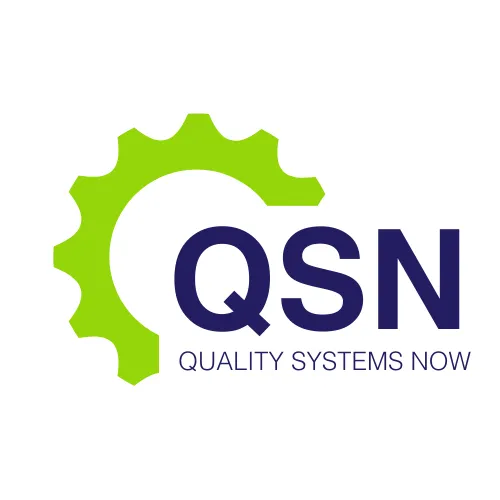LATEST NEWS

Process Development and Identification of Critical Process Parameters (CPPs)
The medical and pharmaceutical industries in Australia are governed by stringent regulations to ensure that products meet high standards of safety and efficacy. Process development plays a vital role in achieving these standards. Central to this is the identification of Critical Process Parameters (CPPs), which are essential variables affecting the production process and final product quality. We explore the framework for CPP identification, considering regulatory requirements, methodological approaches, and practical applications within the Australian industry.
At Quality Systems now, we help clients Australia wide with Process Development and Critical Process Parameters
Regulatory Framework
The Therapeutic Goods Administration (TGA) oversees the regulation of pharmaceuticals and medical devices in Australia. TGA guidelines align with international standards, such as those from the International Council for Harmonisation of Technical Requirements for Pharmaceuticals for Human Use (ICH). Specifically, ICH Q8 (R2) on pharmaceutical development and ICH Q9 on quality risk management provide frameworks for identifying and controlling CPPs.
Methodology for Identifying CPPs
Identifying CPPs involves a systematic approach that integrates scientific understanding with risk management principles. The following steps outline the methodology:
Risk Assessment: Begin with a risk assessment to identify potential variables that could impact product quality. Tools such as Failure Mode and Effects Analysis (FMEA) or Fishbone diagrams can be employed.
Design of Experiments (DoE): Use DoE to systematically investigate the effects of various process parameters. This approach helps in understanding the relationship between parameters and identifying which ones are critical.
Process Mapping: Develop a detailed process map to visualize each step of the production process. This aids in pinpointing where critical parameters are likely to be found.
Data Collection and Analysis: Collect data during experimental runs and analyze it to determine which parameters significantly affect the process. Statistical tools such as regression analysis or multivariate analysis can be useful.
Control Strategy Development: Establish a control strategy for CPPs, including monitoring methods and acceptable limits to ensure consistent product quality.
Practical Approaches and Case Studies
To illustrate the practical application of CPP identification, we present two case studies from the Australian pharmaceutical industry.
Case Study 1: Biopharmaceutical Manufacturing
In a biopharmaceutical manufacturing process, the production of a monoclonal antibody involves several critical stages, including cell culture, purification, and formulation. Through DoE and risk assessment, key CPPs such as pH, temperature, and nutrient concentrations in the cell culture stage were identified. Implementing a control strategy that monitors and adjusts these parameters in real-time led to improved yield and product consistency.
Case Study 2: Solid Oral Dosage Form Production
For the production of a solid oral dosage form, such as a tablet, critical parameters include blending time, compression force, and drying temperature. By applying process mapping and FMEA, the manufacturing team identified these CPPs. Data analysis revealed that variations in compression force had the most significant impact on tablet hardness and dissolution rate. As a result, a robust control strategy was developed, incorporating in-line sensors to monitor compression force continuously.
Challenges and Solutions
The identification and control of CPPs in the Australian medical and pharmaceutical environment face several challenges:
Complexity of Biological Systems: Biopharmaceuticals involve complex biological systems that can exhibit variability. Advanced statistical methods and real-time analytics are essential to manage this complexity.
Regulatory Compliance: Adhering to TGA and ICH guidelines requires meticulous documentation and validation. Developing comprehensive Standard Operating Procedures (SOPs) and training staff can address compliance issues.
Technological Integration: Integrating advanced technologies such as Process Analytical Technology (PAT) and automation can enhance the monitoring and control of CPPs. However, this requires significant investment and technical expertise.
Future Directions
The future of CPP identification and control in Australia lies in leveraging emerging technologies and methodologies. Machine learning and artificial intelligence (AI) can predict process variations and optimize parameters in real-time. Additionally, continuous manufacturing techniques, which integrate production steps into a seamless process, offer opportunities for more consistent and efficient production.
Do You want to Know More? Lets Talk.
In the Australian medical and pharmaceutical environment, the identification of Critical Process Parameters (CPPs) is crucial for ensuring product quality and compliance with regulatory standards. A systematic approach involving risk assessment, Design of Experiments (DoE), process mapping, and data analysis is essential for identifying and controlling CPPs. Case studies from the Australian industry demonstrate the practical application and benefits of these methodologies. Despite challenges such as biological complexity and regulatory compliance, the integration of advanced technologies holds promise for the future of process development and CPP management.
References
Therapeutic Goods Administration (TGA). (2021). Australian Regulatory Guidelines for Prescription Medicines.
International Council for Harmonisation of Technical Requirements for Pharmaceuticals for Human Use (ICH). (2009). ICH Q8 (R2) Pharmaceutical Development.
International Council for Harmonisation of Technical Requirements for Pharmaceuticals for Human Use (ICH). (2005). ICH Q9 Quality Risk Management.
Montgomery, D. C. (2017). Design and Analysis of Experiments. John Wiley & Sons.
Patil, A. S., & Pethe, A. M. (2013). Quality by Design (QbD): A new concept for development of quality pharmaceuticals. International Journal of Pharmaceutical Quality Assurance.
